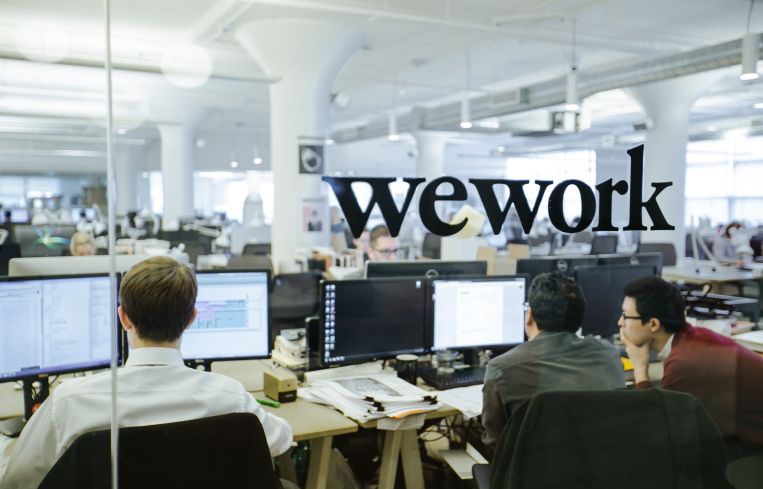Manhattan’s Coworking Trend on the Rise, but Still Has Long Way to Go
By Liam La Guerre May 25, 2018 7:40 am
reprints
Coworking has no doubt been exponentially growing in Manhattan, and new data suggests that 2018 will be no different.
For the first quarter of 2018, 19 coworking leases comprising nearly 916,000 square feet were completed, a dramatic increase from around nine deals and 230,000 square feet in the first quarter of 2017, according to a CBRE coworking report released Tuesday.
For all of 2017 there was 45 deals for 1.2 million square feet of flexible office space inked in Manhattan. This has only been outpaced (by square footage) by 2015, when there was 22 coworking transactions of approximately 1.3 million square feet, which means “we can predict that we’re on track to do more leasing in this sector this year than ever before,” Nicole LaRusso, a director of research and analysis for CBRE, said in a prepared statement to Commercial Observer. (CBRE’s data date back to 2004.)
LaRusso added: “The trend has been gaining momentum for a while, but its really taking off now for two reasons. One is an infusion of capital—many of the big operators have received substantial investments from outside partners, which they are using to fund expansion. Secondly, many operators are diversifying and expanding their offerings—going from executive suites to coworking, from coworking to enterprise—and they need more space to pursue these new opportunities.”
It’s probably no surprise, but WeWork (WE) is the largest flexible space operator in Manhattan with 4.1 million square feet as of the first quarter of 2018, according to the report. Next is IWG (formerly known as Regus), which has about 1.5 million square feet, and then rapidly expanding Knotel, with 573,000 square feet. In total, there are now roughly 65 flexible office companies with more than 260 locations, the report indicates.
Since 2013, when there was only 3.7 million square feet of coworking space in Manhattan, the sector has grown 22 percent on average each year to 8.2 million square in 2017, according to the report. That number jumps to 9.2 million in the first quarter of 2018, representing 2.5 percent, of the 368 million-square-foot Manhattan office market.
CBRE’s research shows that if the sector continues to grow at the same pace, there will be 15 million square feet of coworking space by the end of 2020, or roughly 4 percent of the total office market in Manhattan.
Despite the prevalence of coworking arrangements, not everyone is comfortable in those type of deals.
The report says that traditional long-term leases “are—and will remain—the preferred” agreement for companies in need of offices, because companies are still just testing out coworking.
“Between 2013 and 2017, the leasing activity in this sector, while impressive on its own, was only 3 percent of the total annual leasing activity,” LaRusso said. “If you zoom out and look at the big picture, you see that traditional leasing remains to be the dominant choice for tenants. While it’s true that larger, corporate tenants are experimenting with flexible space options, we see that as being a fraction of their real estate strategy, not the whole thing.”


